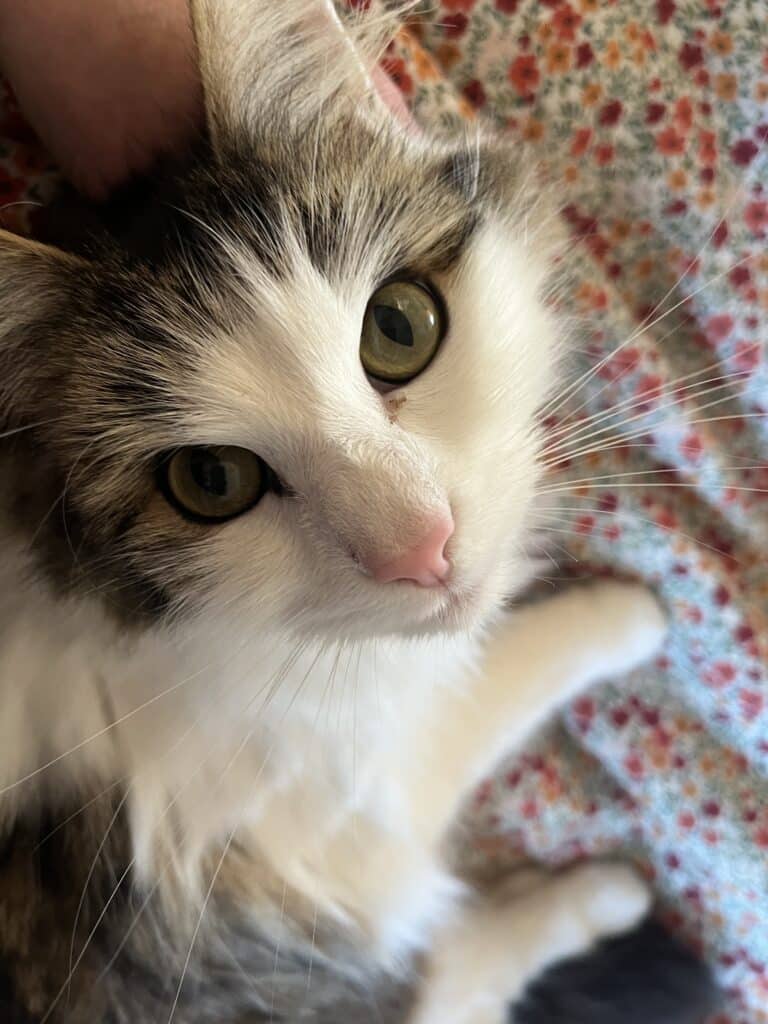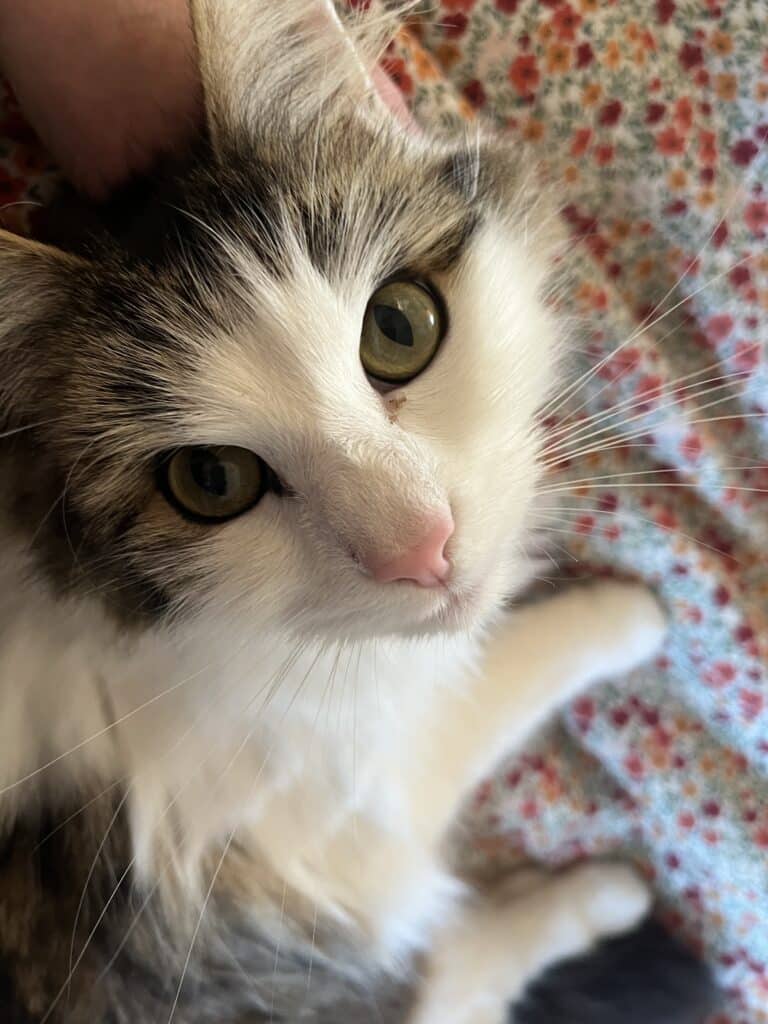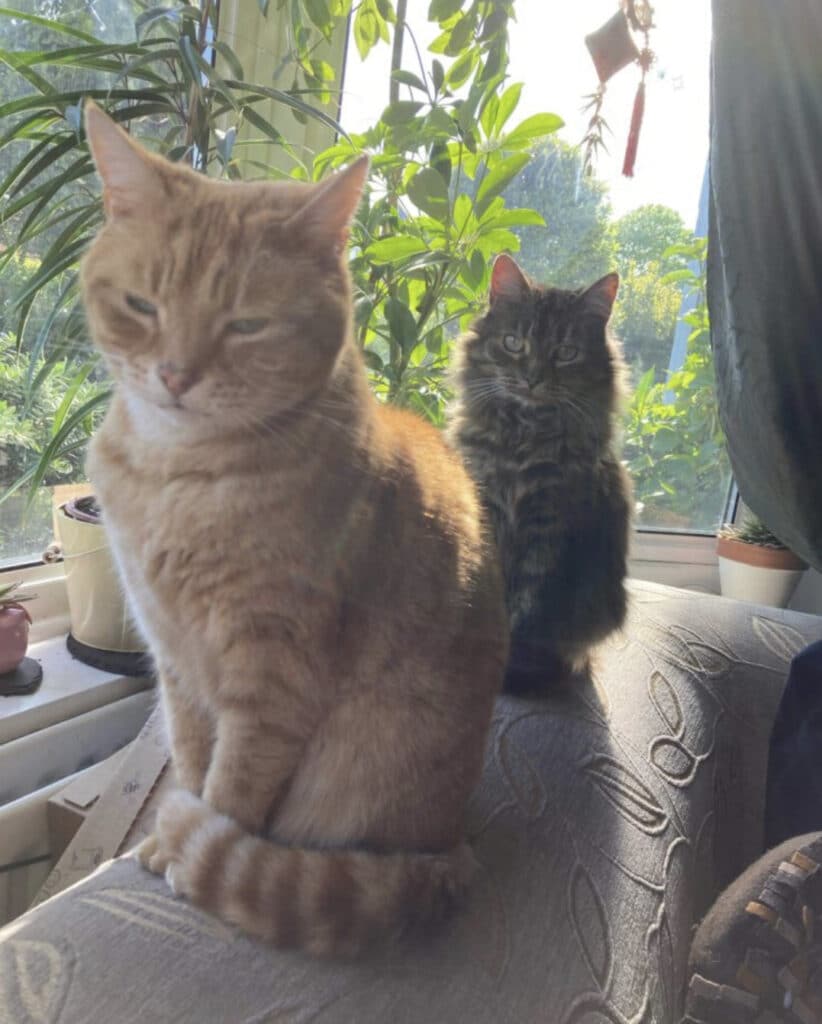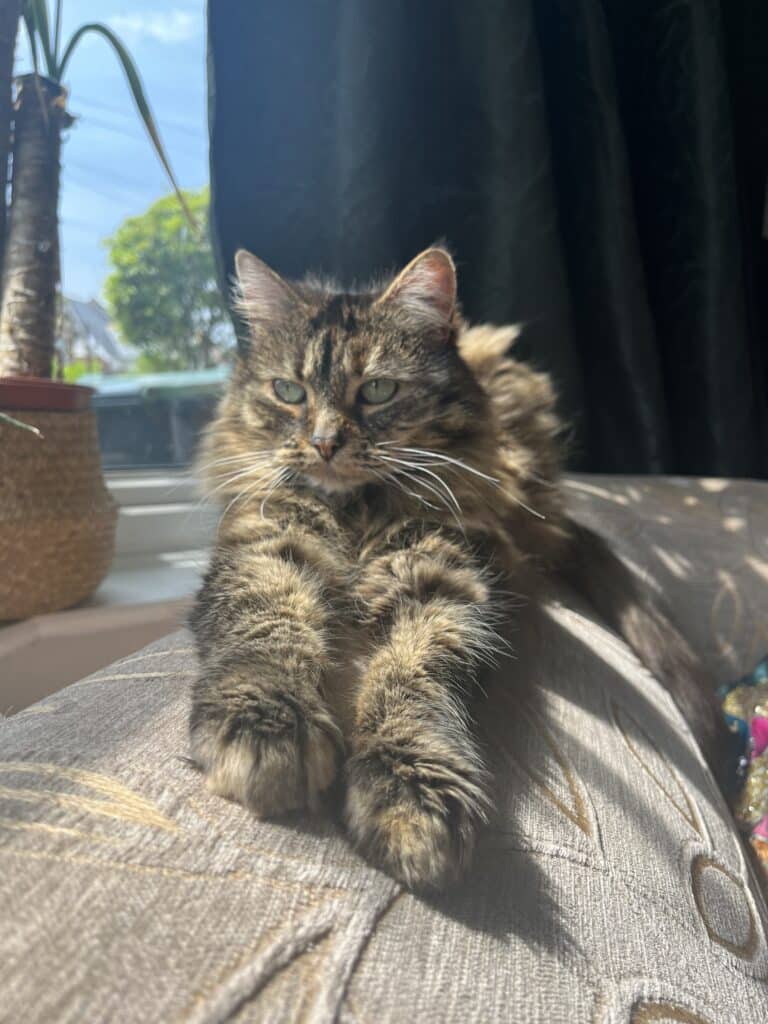Cats are fascinating creatures with a variety of behaviours that can sometimes baffle even the most experienced pet owners. While some behaviours are commonly understood, others can seem mysterious or even concerning. This guide delves into some of the more specific and intricate behaviours exhibited by cats, providing insights into what they mean and how to respond.
1. Kneading: The Rhythmic Pressing
Kneading, often referred to as “making biscuits,” is a behaviour where a cat rhythmically pushes its paws against a soft surface, alternating between left and right. This behaviour is usually accompanied by purring and a relaxed demeanour.
Origins of Kneading
Kneading is an instinctual behaviour that originates in kittenhood. Kittens knead their mother’s belly to stimulate milk flow during nursing. This action is comforting and soothing, and many cats carry this behaviour into adulthood.
Why Do Cats Knead?
- Comfort and Contentment: Adult cats knead when they are feeling particularly relaxed and content. It’s often a sign that your cat feels safe and happy in your presence.
- Territorial Marking: Cats have scent glands in their paws, and kneading helps them mark their territory. When a cat kneads, it’s subtly leaving its scent on the surface, which could be a person, blanket, or piece of furniture.
- Nesting Instinct: Kneading may also be linked to a cat’s instinct to create a comfortable resting place. In the wild, cats might knead to soften grass or leaves to form a bed.
How to Respond
If your cat’s kneading is causing discomfort, especially if they use their claws, gently redirect them onto a blanket or other soft surface. Trimming their claws regularly can also help prevent any accidental scratching during kneading sessions.

2. Head-Butting (Bunting): The Friendly Nudge
Head-butting, or bunting, is when a cat nudges you with its head, often targeting your face, chin, or legs. This behaviour is generally seen as a sign of affection and trust.
Why Do Cats Head-Butt?
- Marking Territory: Like kneading, head-butting is a way for cats to mark their territory. Cats have scent glands located around their faces, and by rubbing their heads against you, they are leaving their scent and marking you as part of their safe environment.
- Seeking Attention: Head-butting is also a way for your cat to seek attention or ask for affection. It’s their way of saying they want to be petted or simply want to be near you.
- Bonding: This behaviour is a clear indication that your cat feels bonded to you. It’s a social behaviour that cats often exhibit with other cats they are close to, as well as with their favourite humans.
How to Respond
Embrace the head-butting as a sign of your cat’s affection. Respond with gentle petting or scratching around the head and neck area, which is often where they prefer to be touched. This will reinforce the bond between you and your cat.

3. Slow Blinking: The Cat Kiss
Slow blinking, often referred to as a “cat kiss,” is when a cat looks at you and slowly closes and opens its eyes. This subtle gesture is a sign of trust and affection.
Why Do Cats Slow Blink?
- Non-Threatening Communication: In the feline world, direct eye contact can be seen as a threat. By slow blinking, a cat is communicating that it feels safe and is not a threat to you.
- Bonding: Slow blinking is a way for cats to express their affection towards you. It’s their way of showing that they trust you and feel comfortable in your presence.
How to Respond
You can return your cat’s slow blink with one of your own. Slowly blink back at your cat, and they may respond with more slow blinks. This exchange can help strengthen the bond between you and your cat, reinforcing the trust and affection you share.

4. Chirping and Chattering: The Excited Sound
Cats sometimes make a distinctive chirping or chattering sound, especially when they spot birds or other small animals outside. This behaviour is both intriguing and amusing to observe.
Why Do Cats Chirp or Chatter?
- Hunting Instinct: Chirping and chattering are often triggered by a cat’s hunting instincts. When they see potential prey, such as a bird or a squirrel, they may make these sounds out of excitement or frustration at not being able to catch the prey.
- Mimicking Prey Sounds: Some experts believe that this behaviour may be an attempt to mimic the sounds of birds or rodents, potentially to confuse or lure prey. While this theory is debated, it adds an interesting layer to the behaviour.
- Excitement and Frustration: The chattering sound can also be a sign of frustration, as the cat is unable to reach the prey. It’s a way for them to express their heightened state of arousal and excitement.
How to Respond
Chirping and chattering are normal behaviours and do not require intervention. However, providing interactive toys that mimic prey can help satisfy your cat’s hunting instincts and reduce any frustration from not being able to chase real prey.

5. Belly-Up: The Vulnerable Display
When a cat rolls over and exposes its belly, it’s a gesture that often confuses cat owners. While it may seem like an invitation for a belly rub, this isn’t always the case.
Why Do Cats Show Their Belly?
- Trust: Exposing the belly is a sign of trust. The belly is one of the most vulnerable parts of a cat’s body, and showing it means that your cat feels safe and secure with you.
- Comfort: A cat may roll onto its back when it’s feeling relaxed and comfortable. This is often seen during play or when lounging in a favourite spot.
- Play Invitation: Sometimes, a cat showing its belly may be inviting you to play. However, the play may quickly turn into a defensive reaction if the cat feels overstimulated or threatened.
How to Respond
It’s important to understand that not all cats enjoy having their bellies touched, even if they expose them. Approach with caution and watch for any signs of discomfort, such as tail flicking or ears flattening. If your cat seems receptive, you can gently stroke their belly, but be prepared to stop if they show signs of agitation.

6. Purring with a Twist: The Anxious Purr
Purring is often associated with a cat’s contentment, but it’s not always a sign of happiness. Cats also purr when they are anxious, injured, or unwell.
Why Do Cats Purr When Anxious?
- Self-Soothing: Purring can be a self-soothing mechanism for cats. When they are in pain or feeling stressed, purring can help them calm down and feel more secure.
- Healing: Some studies suggest that the frequency of a cat’s purr has a healing effect, promoting the repair of bones and tissues. This may be why cats purr when they are injured or unwell.
How to Respond
If your cat is purring but shows other signs of distress, such as hiding, loss of appetite, or lethargy, it’s important to monitor their behaviour closely. A visit to the vet may be necessary to rule out any underlying health issues.

7. Zoomies: The Sudden Burst of Energy
The “zoomies,” also known as frenetic random activity periods (FRAPs), are when a cat suddenly dashes around the house at high speed, often with no apparent reason.
Why Do Cats Get the Zoomies?
- Pent-Up Energy: Cats, especially those that spend a lot of time indoors, may get the zoomies as a way to release pent-up energy. This behaviour is more common in younger cats and kittens.
- Hunting Instinct: The zoomies can also be linked to a cat’s natural hunting instincts. After a nap or a meal, a cat might experience a burst of energy, mimicking the burst of energy needed to chase prey in the wild.
- Bathroom Routine: Some cats get the zoomies after using the litter box. This might be due to the relief of having relieved themselves or simply as a way to celebrate feeling lighter and more comfortable.
How to Respond
The zoomies are a normal behaviour and usually don’t require intervention. However, ensuring your cat has enough physical and mental stimulation throughout the day can help reduce the frequency of the zoomies. Interactive play sessions, puzzle feeders, and a variety of toys can help your cat burn off energy in a more controlled manner.

8. Sitting on Objects: The Peculiar Preference
Many cat owners have noticed that their cats have a peculiar habit of sitting on specific objects, such as books, keyboards, or even their owner’s lap, seemingly out of the blue.
Why Do Cats Sit on Objects?
- Seeking Attention: Cats are highly attuned to their owner’s attention and often seek to be the centre of it. By sitting on objects you’re focusing on, like a book or keyboard, your cat is likely trying to draw your attention away from the object and towards themselves.
- Comfort and Warmth: Cats are also drawn to warm spots. A laptop or a book that has absorbed your body heat might be more appealing than a cold surface.
- Scent and Familiarity: Cats are comforted by familiar scents. They may choose to sit on objects that carry your scent as a way of feeling closer to you.
How to Respond
If your cat sitting on your work or favourite book is disruptive, try to provide alternative comfortable spaces nearby, such as a soft blanket or a heated cat bed. This way, your cat can stay close to you without being directly in the way.

9. Ignoring You: The Aloof Behaviour
Cats are sometimes labelled as aloof or independent, often seeming to ignore their owners. While this behaviour can be frustrating, it’s usually just a part of a cat’s natural personality.
Why Do Cats Ignore You?
- Independence: Cats are naturally independent creatures. Unlike dogs, which are pack animals, cats are solitary by nature and don’t always feel the need to engage with their owners constantly.
- Stimulation: Cats may also ignore you if they are overstimulated or simply not in the mood for interaction. This is not a sign of dislike, but rather a reflection of their desire for alone time.
- Attention on Their Terms: Cats often want attention on their own terms. They may ignore you at one moment and seek affection the next, depending on their mood and needs.
How to Respond
Respect your cat’s independence and give them space when they seem disinterested in interaction. By allowing your cat to approach you when they’re ready, you’ll build a stronger and more trusting relationship.

10. Excessive Grooming: The Stress Indicator
While grooming is a natural and healthy behaviour for cats, excessive grooming can be a sign of stress, anxiety, or health issues.
Why Do Cats Groom Excessively?
- Stress and Anxiety: Cats may groom excessively as a coping mechanism when they are stressed or anxious. This behaviour is similar to how some people might bite their nails or twirl their hair when nervous.
- Allergies or Skin Irritation: Excessive grooming can also indicate a physical issue, such as allergies, parasites, or skin infections. Cats may lick or chew at a particular area to soothe itching or discomfort.
- Compulsive Behaviour: In some cases, excessive grooming can become a compulsive behaviour, where the cat grooms to the point of causing bald spots or skin damage. This often requires veterinary intervention to manage.
How to Respond
If you notice your cat grooming excessively, it’s important to consult with a veterinarian to rule out any medical conditions. If the behaviour is stress-related, addressing the source of stress and providing environmental enrichment can help reduce the behaviour.
Cats are complex creatures with a wide range of specific behaviours that can sometimes be difficult to decipher. By paying close attention to your cat’s actions and the context in which they occur, you can better understand what your feline friend is trying to communicate. Whether it’s kneading, chirping, or ignoring you, each behaviour has its roots in instinct and emotion. Understanding these behaviours not only helps in providing better care but also strengthens the bond between you and your cat. Remember, every cat is unique, so while these behaviours are common, your cat may have its own quirks and personality traits that make it special.







